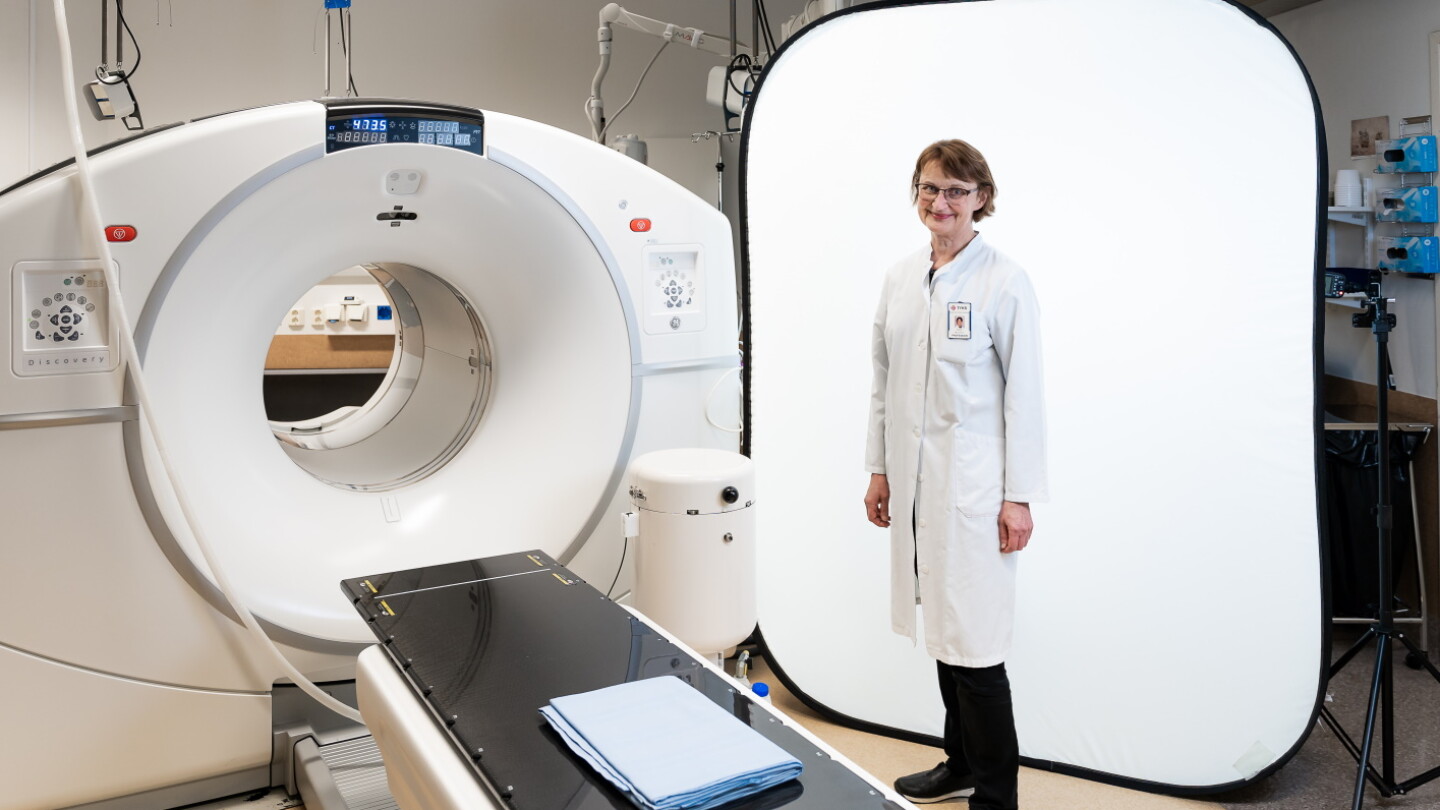InFLAMES (Innovation Ecosystem based on the Immune System) is a Finnish research flagship that aims at identifying novel drug targets using the most modern technological platforms and finding novel diagnostic tools to identify the patients benefitting from personalised therapies.
Obesity is often associated with an inconspicuous and unpleasant companion: low-level inflammation, which is connected to many of our national diseases. InFLAMES Group Leader, Professor Pirjo Nuutila believes that solutions for preventing obesity can be found by studying brown fat. Brown fat produces heat but also participates in regulating appetite.
Brown fat as a phenomenon has been acknowledged for a while already, and it has been identified in mammals and new-born babies. However, few members of the scientific community used to believe that brown fat was also present in adult humans. This was confirmed in 2009, when researchers from Turku PET Centre Pirjo Nuutila and Kirsi Virtanen used PET imaging and adipose tissue analysis to demonstrate that adult humans do indeed have brown fat.
– There is around 60 grams of brown fat around the neck region, but it can also be found in smaller quantities in the areas surrounding important organs such as the heart and spine as well as the junctions of the peripheral nervous system. It is most often and to the most extent prevalent in young, female, and normal-weight adults, says Pirjo Nuutila.
Brown fat activates in cold temperatures and produces heat by burning fatty acids and sugars. Active brown fat is assumed to be linked to general health. Studies have shown that people who have active brown fat have better blood sugar and lipid levels than those who have little or no brown fat.
Immediately, the discoveries related to brown fat appeared to open up new, promising perspectives to weight control. What if brown fat could be activated?
– In addition to exposure to cold temperatures, brown fat is also activated by temperature changes and possibly some foods, such as capsaicin found in chilli peppers. Functioning medicine for activating brown fat is yet to be found.
Nuutila remarks that we often receive a reminder about the workings of brown fat as the weather becomes colder when autumn turns to winter. The fact that chilly mornings rather quickly become more tolerable could be explained by the activation of brown fat.
– It is possible that the well-being experienced by wintertime cold-water swimmers is connected with brown fat, but further research is needed to explore this.
Eating Activates Brown Fat
Brown fat can also be activated by eating, as having a meal increased heat production in brown fat. No one knew exactly why this happened. The mystery began to unravel when the researchers discovered secretin receptors on the surface of brown adipose tissue.
– Secretin is an intestinal hormone which causes the pancreas to secrete peptic juices in the intestines and stomach. Since brown adipose tissue has secretin receptors, it was highly probable that this hormone also impacts brown fat.
These effects were examined in a new study in which the test subjects were given secretin on the first day and mild saline solution on the second day. On the day when they were given secretin, the researchers recorded activated function of the test subjects’ brown fat, which manifested as longer intervals between meals. Moreover, their bodies used more energy than normally.
– Secretin and brown fat participate in regulating appetite in the brain. These connections related to satiety are a completely new discovery. We are once again one step closer to better understanding of how the brain receives information that the body has received food and no longer needs it, explains Nuutila.
Secretin functions similarly to the GLP-1 hormone which is nowadays used as weight-loss medication. For InFLAMES, secretin offers a similar, promising opportunity for drug development. The connections between inflammation and brown fat activity are also studied actively at the moment.
– A weight controlling method based on the activation of brown fat could be used pre-emptively, at the stage when a person appears to be gaining weight. Significantly overweight people rarely have any brown fat to activate, so they would need other treatment methods, considers Nuutila.
The knowledge on secretin can, of course, be already be taken advantage of. Eating slowly and having smaller portions more often during the day can help unlock more of the benefits of the secretin hormone.
In future, Nuutila and her research group seek to study what kind of a role secretin has in metabolic diseases such as metabolic syndrome or type 2 diabetes.
InFLAMES Flagship is a joint initiative of University of Turku and Åbo Akademi University, Finland. The goal of the Flagship is to integrate the immunological and immunology-related research activities to develop and exploit new diagnostic and therapeutic tools for personalised medicine. InFLAMES is funded by Academy of Finland.






